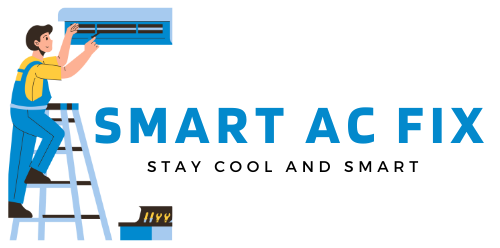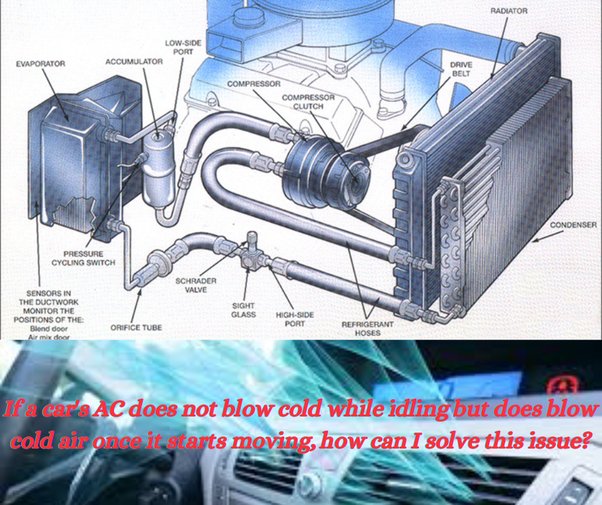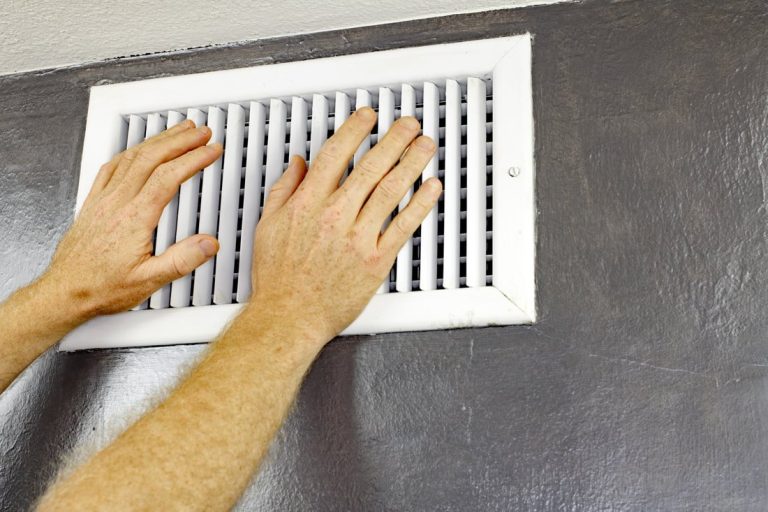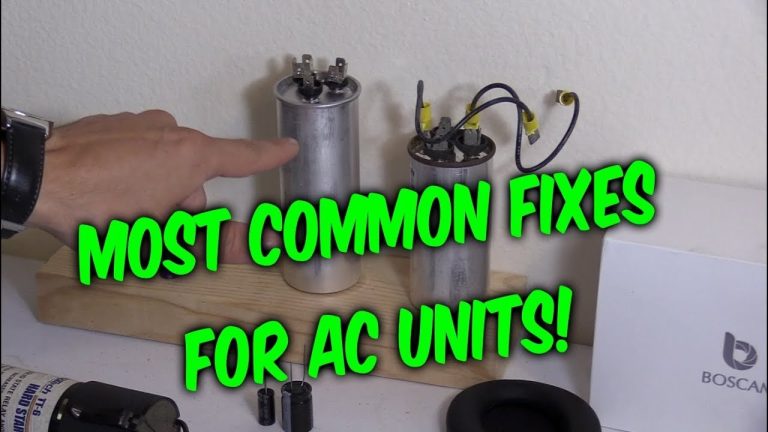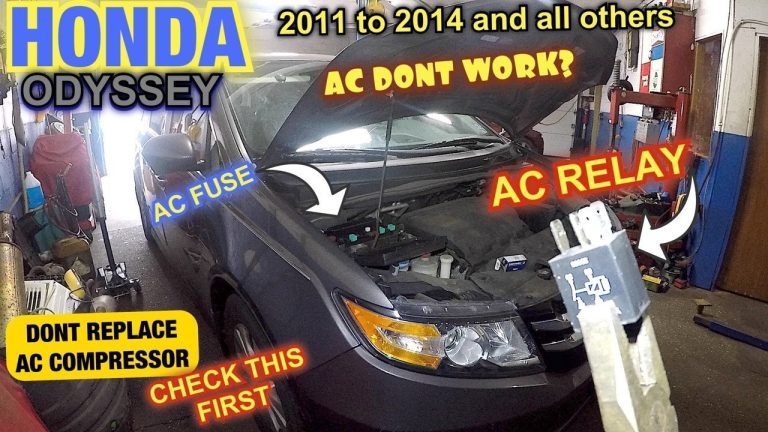Why Does My House Ac Only Work Sometimes? 5 Possible Reasons Explained
There are several potential reasons why your house AC only works sometimes: 1. Thermostat issues: Incorrect settings or a faulty thermostat can cause intermittent cooling. 2. Dirty air filters: Clogged air filters restrict airflow and can lead to inconsistent cooling. 3. Refrigerant leaks: Low refrigerant levels can cause the AC to work sporadically. 4. Electrical problems: Faulty wiring or a malfunctioning compressor can result in intermittent operation. 5. System age and maintenance: Aging AC units or lack of regular maintenance can contribute to intermittent performance.
When the scorching summer heat settles in, there’s nothing more frustrating than an air conditioning system that decides to be temperamental. No one wants to suffer through sweltering days and sleepless nights, constantly adjusting the thermostat and wondering why their house AC only works sometimes.
But before you start questioning the universe’s sense of humor, let’s explore the potential reasons behind this enigma. Imagine this: you’ve just returned home, ready to indulge in the cool oasis you call your living room.
But to your dismay, the air blowing out of the vents is lukewarm, leaving you fanning yourself in disbelief. What could be causing this intermittent air conditioning agony? In this article, we’ll delve into the five possible reasons why your house AC only works sometimes, unlocking the knowledge you need to tackle this frustrating situation head-on. Whether you’re a homeowner or a renter, understanding these reasons can help you maintain a comfortable indoor environment while avoiding unnecessary repairs and excessive energy costs.
Let’s unravel the mystery together.
I. Understanding the Basics of Air Conditioning Systems
A. Explanation of how an air conditioning system works
An air conditioning system works by removing heat and humidity from indoor air to create a comfortable living environment. It uses a refrigeration cycle to cool the air and then circulates it back into the room.
B. Components of an air conditioning system
An air conditioning system consists of several key components, including:
- Compressor: Responsible for circulating the refrigerant and compressing it to increase its temperature.
- Condenser: Releases heat from the refrigerant and converts it from a high-pressure gas to a high-pressure liquid.
- Evaporator: Absorbs heat from the indoor air and converts the refrigerant from a low-pressure liquid to a low-pressure gas.
- Expansion valve: Regulates the flow of refrigerant and lowers its pressure before it enters the evaporator.
C. Importance of regular maintenance and servicing
Regular maintenance and servicing are essential for the proper functioning of an air conditioning system. This includes cleaning or replacing air filters, checking refrigerant levels, inspecting electrical connections, and lubricating moving parts. Neglecting maintenance can lead to reduced performance, increased energy consumption, and costly repairs.
II. Common Reasons for Inconsistent AC Performance
A. Lack of power supply
1. Tripped circuit breaker
A tripped circuit breaker can cause the AC to stop working. When a circuit is overloaded or a fault occurs, the breaker automatically cuts off the power supply to protect the electrical system. Checking the breaker box and resetting any tripped breakers can resolve this issue.
2. Blown fuse
A blown fuse can also disrupt the power supply to the AC unit. Fuses are designed to break the circuit when there is excessive current flow. Replacing the blown fuse with a new one of the appropriate rating can restore power to the AC.
B. Thermostat issues
1. Incorrect temperature settings
Incorrect temperature settings on the thermostat can cause the AC to work intermittently. If the temperature is set too high or too low, the AC may not cycle on or off as needed. Adjusting the temperature settings to the desired level can resolve this issue.
2. Faulty thermostat sensor
A faulty thermostat sensor can inaccurately measure the temperature, leading to inconsistent AC performance. This can result in the AC cycling on and off erratically. Calibrating or replacing the thermostat sensor can help ensure accurate temperature readings and improve the AC’s operation.
C. Dirty air filters
Dirty air filters can restrict airflow and reduce the cooling capacity of the AC. When the filters are clogged with dust, dirt, and debris, the AC has to work harder to push air through, leading to inconsistent performance. Cleaning or replacing the air filters regularly is essential for optimal AC operation.
D. Refrigerant leaks
1. Causes of refrigerant leaks
Refrigerant leaks can occur due to aging components, improper installation, or physical damage to the AC system. When the refrigerant level is low, the AC may only work intermittently or not at all.
2. Symptoms of refrigerant leaks
Common symptoms of refrigerant leaks include reduced cooling capacity, ice formation on the evaporator coil, and hissing or bubbling sounds near the AC unit. If you suspect a refrigerant leak, it’s important to have it repaired by a professional technician.
E. Blocked or restricted airflow
1. Clogged air ducts
Clogged air ducts can impede the airflow and affect the performance of the AC. Dust, debris, and even pests can accumulate in the ductwork over time, obstructing the passage of air. Having the air ducts professionally cleaned can improve airflow and enhance the AC’s efficiency.
2. Obstructed vents and registers
Blocked or closed vents and registers can disrupt the flow of cool air into the rooms. Furniture, curtains, and other obstructions can prevent the proper distribution of air, resulting in uneven cooling or no cooling at all. Ensuring that vents and registers are clear and open can help maintain consistent AC performance.
F. Compressor problems
1. Electrical issues
Electrical problems, such as faulty wiring or capacitor issues, can cause the compressor to malfunction. The compressor plays a vital role in the refrigeration cycle and is responsible for compressing the refrigerant. If the compressor is not functioning properly, the AC may only work intermittently.
2. Mechanical failures
Mechanical failures in the compressor, such as worn-out bearings or damaged valves, can also lead to inconsistent AC performance. The compressor’s mechanical components can wear out over time, impacting its ability to compress the refrigerant effectively. Repairing or replacing the compressor may be necessary to restore proper AC operation.
III. Troubleshooting and Solutions for Intermittent AC Operation
A. Check power supply
1. Inspecting circuit breakers and fuses
If the AC is not receiving power, it’s important to check the circuit breakers and fuses to ensure they are functioning correctly. Look for any tripped breakers or blown fuses that may be causing the power supply issue.
2. Resetting tripped breakers or replacing blown fuses
If a breaker has tripped, resetting it by switching it off and then on can restore the power supply. In the case of blown fuses, replacing them with new ones can solve the power supply problem. If the issue persists, it may be necessary to consult a professional technician.
B. Verify thermostat settings and functionality
1. Adjusting temperature settings
Ensure that the thermostat is set to the desired temperature. If it is set too high or too low, adjust it to the appropriate level to enable proper cooling. Also, make sure the thermostat is set to “cool” mode.
2. Calibrating or replacing faulty thermostat sensors
If the thermostat sensor is faulty, it may provide inaccurate temperature readings, leading to inconsistent AC operation. Calibrating or replacing the sensor can help ensure accurate temperature sensing, allowing the AC to function properly.
C. Clean or replace air filters
1. Importance of regular filter maintenance
Maintaining clean air filters is crucial for optimal AC performance. Dirty filters restrict airflow, reduce cooling capacity, and strain the AC system. Regularly cleaning or replacing the air filters, as recommended by the manufacturer, can enhance the efficiency of the AC.
2. Steps to clean or replace air filters
To clean air filters, remove them from the AC unit and gently wash them with water or vacuum off the dust. Allow the filters to dry completely before reinstalling them. If the filters are damaged or excessively dirty, it may be necessary to replace them with new ones.
D. Detect and repair refrigerant leaks
1. Hiring a professional technician for leak detection
Refrigerant leaks should be addressed by a professional HVAC technician. They have the necessary tools and expertise to detect and repair leaks in the AC system. Attempting to fix refrigerant leaks without the proper knowledge can lead to further damage and safety hazards.
2. Repairing leaks and recharging refrigerant
Once the refrigerant leaks are identified, the technician will repair the leaks and recharge the refrigerant to the appropriate level. This will ensure that the AC operates efficiently and consistently.
E. Clearing obstructions and improving airflow
1. Inspecting air ducts for blockages or leaks
Check the air ducts for any blockages, leaks, or damage. If there are obstructions or leaks, it can affect the airflow and reduce the AC’s performance. Professional duct cleaning or sealing may be necessary to optimize airflow.
2. Removing obstacles from vents and registers
Ensure that vents and registers are free from any obstacles that may obstruct the airflow. Move furniture, curtains, or other objects that may be blocking the vents. Improving the airflow will help maintain consistent cooling throughout the space.
F. Resolving compressor issues
1. Diagnosing electrical problems
If the compressor is experiencing electrical issues, it’s important to have a professional technician diagnose and repair the problem. Electrical components can be hazardous to work with, and improper handling can lead to further damage or injury.
2. Addressing mechanical failures
In the case of mechanical failures in the compressor, a professional technician can assess the extent of the damage and determine the appropriate course of action. This may involve repairing or replacing the compressor to restore optimal AC performance.
IV. Preventive Measures and Maintenance Tips
A. Regular maintenance schedule
Following a regular maintenance schedule is crucial for keeping the AC in good working condition. This includes annual professional inspections and tune-ups to identify and address any potential issues before they escalate.
B. Importance of professional inspections
Professional inspections by qualified HVAC technicians can help identify hidden problems and ensure that the AC system is operating efficiently. They can also provide expert advice on maintenance practices and offer solutions to improve energy efficiency.
C. DIY maintenance tasks
1. Cleaning air filters
Regularly cleaning air filters is a simple but important maintenance task. Gently wash or vacuum the filters to remove dust and debris, ensuring optimal airflow and system performance.
2. Removing debris from the outdoor unit
Clearing the outdoor unit of debris, such as leaves, grass, and dirt, helps maintain proper airflow and prevents damage to the AC system. Use a brush or vacuum to remove any accumulated debris on and around the unit.
D. Air conditioning efficiency tips
1. Maximizing insulation
Proper insulation helps reduce heat transfer and allows the AC to cool the indoor space more efficiently. Insulate doors, windows, and walls to minimize heat gain and maximize energy savings.
2. Using programmable thermostats
Programmable thermostats allow you to set temperature schedules based on your lifestyle and preferences. This helps optimize energy usage, ensuring that the AC operates when needed and saves energy when you’re away.
V. When to Seek Professional Help
A. Recognizing when DIY solutions are insufficient
If you’ve tried the troubleshooting steps mentioned above and the AC still only works intermittently, it may be time to seek professional help. Some issues require specialized knowledge and equipment to diagnose and repair.
B. Signs of complex AC problems
Complex AC problems may exhibit signs such as unusual noises, excessive cycling, uneven cooling, or complete system failure. These issues often require professional intervention to ensure safe and effective resolution.
C. Finding trusted HVAC professionals
1. Recommendations and referrals
Seek recommendations and referrals from trusted friends, family members, or neighbors who have had positive experiences with HVAC professionals. Personal recommendations can help you find reliable and reputable technicians.
2. Researching and vetting service providers
Research and vet HVAC service providers by checking their credentials, licenses, certifications, and customer reviews. Verify their experience and expertise to ensure that they are qualified to handle your AC system.
VI. Conclusion
In conclusion, there are several possible reasons why your house AC only works sometimes. Lack of power supply, thermostat issues, dirty air filters, refrigerant leaks, blocked airflow, and compressor problems can all contribute to inconsistent AC performance. By following the troubleshooting steps outlined in this article and practicing regular maintenance, you can improve the reliability and efficiency of your air conditioning system. If DIY solutions are insufficient, it’s important to seek professional help from trusted HVAC technicians to ensure safe and effective repairs. Maintaining a comfortable indoor environment is essential, especially during the hot summer months, and addressing AC issues promptly can help you stay cool and comfortable.
AC Unit Not Cooling House – 20 Reasons Why
Frequently Asked Questions (FAQ)
Why does my house AC only work sometimes?
Can a clogged air filter cause intermittent AC operation?
What could be causing low refrigerant levels?
Is a faulty thermostat a common cause for intermittent AC operation?
What should I do if my AC only works sometimes?
Final Words: Maintaining and Troubleshooting Your House AC System
In conclusion, if you’re wondering why your house AC only works sometimes, there could be several factors causing this issue. From lack of power supply to thermostat issues, dirty air filters, refrigerant leaks, blocked airflow, and compressor problems, all these can contribute to inconsistent AC performance.
It is important to regularly maintain and service your air conditioning system to ensure its proper functioning. This includes cleaning or replacing air filters, checking refrigerant levels, inspecting electrical connections, and lubricating moving parts.
Neglecting maintenance can lead to reduced performance, increased energy consumption, and costly repairs. To troubleshoot the intermittent operation of your AC, you can start by checking the power supply, inspecting circuit breakers and fuses, and resetting tripped breakers or replacing blown fuses. It is also crucial to verify thermostat settings and functionality, clean or replace air filters, detect and repair refrigerant leaks, clear obstructions, and improve airflow.
In case of compressor issues, it is recommended to have a professional technician diagnose and repair electrical or mechanical problems. Preventive measures and maintenance tips include following a regular maintenance schedule, scheduling professional inspections, performing simple DIY tasks such as cleaning air filters and removing debris from the outdoor unit, maximizing insulation, and using programmable thermostats for energy efficiency. However, if the DIY solutions are insufficient or if you notice complex AC problems such as unusual noises, excessive cycling, uneven cooling, or complete system failure, it is advisable to seek professional help.
